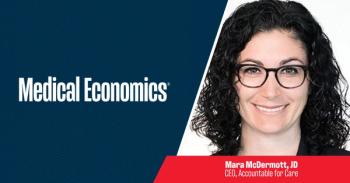
Primary care is primed to be treatment hub for opioid use disorder
Researchers say more physicians prescribing buprenorphine could help stem the overdose crisis across the country.
Primary care physicians could become a new force against the national
The U.S. Agency for Healthcare Research and Quality (AHRQ) and the Kaiser Permanente Washington Health Research Institute (KPWHRI) have published new resources positing primary care as a key area for treating OUD.
“Care of patients with opioid use disorder (OUD) is a natural fit for primary care and its fundamental strengths: respect for the patient, long-term clinical relationships, non-stigmatizing support, a degree of comfort with uncertainty, and a focus on whole-person care,” said the new
“All that is missing is a prescription for
A continuing crisis
Despite increasing public awareness and efforts to slow down OUD, there were 106,842 drug overdose deaths in the 12-month period ending in June 2023. That is less than 111,877 predicted, but still more than double the 47,523 drug overdose deaths for the 12-month time ending in January 2015, according to the National Vital Statistics System.
Expanding OUD treatment in primary care could be a good start to increasing OUD across the entire health care system, said Brian Hurley, MD, MBA, president of the American Society of Addiction Medicine (ASAM).
“In the context of the worst overdose crisis in U.S. history, the key question is not whether or not OUD treatment in primary care is helpful or harmful; rather there is a health-system-wide need to increase access to OUD treatment in all settings of care – primary care, hospital care, ambulatory specialty care including mental health settings, substance use disorder settings, street medicine services,” Hurley said in an emailed statement to Medical Economics.
“Treating OUD in primary care settings is cost effective, improves outcomes for both OUD and other medical comorbidities, and is highly acceptable to patients,” he said.
Making medicine available
AHRQ estimated more than 7.5 million people struggled with OUD in the last year, but only 13% received medications. Patients have reported factors that influence their treatment, such as stigma and prior negative experiences, along with difficulty finding a buprenorphine provider.
“Patients anticipate being rejected and do not trust health care to work for them,” the AHRQ Topic Brief said.
As of 2017, fewer than 10% of primary care clinicians prescribed buprenorphine, citing concerns about lack of time, insurance reimbursement, need for prior authorizations, and more, according to AHRQ.
At least one regulatory issue changed in December 2022: Primary care physicians must have appropriate training and a Drug Enforcement Administration registration number, but no longer need the “X” waiver formerly used to prescribe buprenorphine. Lawmakers also removed the 30-patient cap, so physicians may treat as many patients as they can support with buprenorphine, according to AHRQ and the U.S.
Does it work?
Primary care clinics can offer “substantially more” OUD treatment when compared with usual care clinics, according to a two-year study of a pilot program involving 12 clinics within six health systems in New York, Florida, Michigan, Texas, and Washington. Those findings were reported by KPWHRI in
The most successful intervention clinic saw an increase equal to about 15 more patients treated for a year, for every 10,000 primary care patients, compared with usual care, according to KPWHRI.
“We tested a practical model that showed effectiveness in Massachusetts to see if it could increase treatment and improve outcomes in diverse health systems across the country,” co-lead author Kathy Bradley, MD, MPH, said in a
The study noted some clinics saw no benefit.
“The intervention did not decrease use of urgent care, emergency department visits, and hospitalization among patients with documented opioid use disorder before the trial began,” the KPWHRI news release said.
The clinics involved also received salary to hire a full-time OUD nurse care manager. There was training and technical assistance for nurse care managers, and each clinic had at least three primary care clinicians willing to prescribe buprenorphine.
More resources
Along with the federal publications, Hurley recommended physicians can learn more through ASAM’s
Newsletter
Stay informed and empowered with Medical Economics enewsletter, delivering expert insights, financial strategies, practice management tips and technology trends — tailored for today’s physicians.








